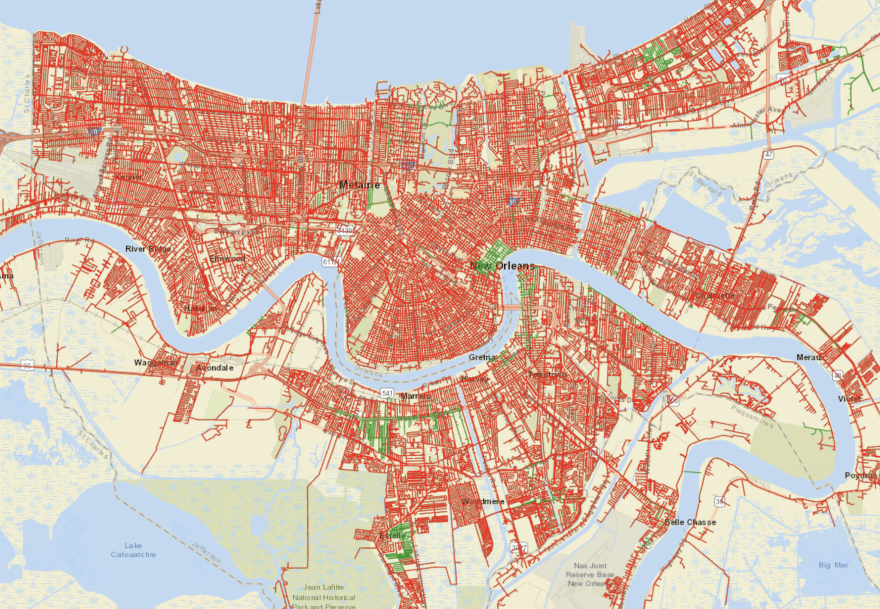UPDATE: Entergy reports 793,840 locations are without power across Louisiana as of 10.45 a.m. Tuesday.
DEMCO, a smaller provider in Southeast Louisiana, said 85,013 places were without power on Tuesday morning, and restoration will take weeks.
UPDATE: Entergy reports 821,632 people are without power across Louisiana as of 2 p.m. Monday.
Jefferson Parish had the most reported outages at 198,364 customers, while 179,621 customers were without power in Orleans Parish.
See the outage map for Louisiana here and New Orleans here.
Entergy crews were dispatched Monday morning where weather permitted to assess the damage and will restore service where it is safe to do so.
DEMCO also reported Monday afternoon that 79,527 customers were still in the dark. The utility covers Ascension, East Baton Rouge, East Feliciana, Livingston, St. Helena, Tangipahoa and West Feliciana parishes.
In an update just after 9 p.m. Sunday night, Entergy said Ida's "catastrophic intensity," had taken out all eight transmission lines that deliver power into the New Orleans. "That caused a load imbalance in the area and resulted in generation in the area coming offline," Entergy reported.
Entergy has provided back-up generation to the New Orleans Sewerage and Water Board.
Much of New Orleans remains without power, with only a few spots in the green, including parts of the French Quarter.
———
Entergy announced via text message that all of Orleans Parish lost electricity, “due to catastrophic transmission damage” just after 7 p.m.
Once Hurricane Ida made landfall, residents in Jefferson and Orleans parishes began losing power quickly. By 2:04 p.m., 294,004 customers in the state were without electricity, according to data provided by power company Entergy Louisiana.
In Jefferson Parish, 103,307 homes were without power, and in Orleans Parish, 81,220 homes had lost electricity. Those numbers multiplied quickly, and officials expected the number of outages to grow once Ida moved over cities New Orleans and Baton Rouge with sustained winds of up to 100 mph.
Five hours later, the entire city of New Orleans went dark.

To find the latest Entergy outage numbers, click here.
“Where the wind blows and hits a transmission line or a feed or anything like that, we will have outages,” said Ramsey Green, deputy chief administrator for infrastructure in New Orleans. “And given that the winds are where they are, there's really nothing anybody can do about it.”
In a press conference this morning, Mayor LaToya Cantrell said Entergy New Orleans would not be able to restore service during the storm. An advisory from the power company Saturday noted that Louisiana residents could be out of electricity for weeks. Entergy said it would be able to fix most outages within a few weeks.
“We have to wait until the storm subsides and then we can do something about it.”
Green also said that power to the sewage lift station was impacted by the storm, reducing the ability for wastewater to go through the system. He asked that residents in New Orleans reduce the amount of water they are using to alleviate pressure on the system.
He explained that Entergy New Orleans had dedicated ten generators to addressing issues with sewage, but that fixing any challenges while the extremely dangerous storm passes may not be possible.
“We are anticipating 15 to 20 inches of rain inside of a 24 or 48 hour period,” Green said. “We're concerned about flooding — primarily right-of-way flooding and low-lying areas. And we are not into the thick of this yet. It is going, and it's only going to get worse for a little while.”




